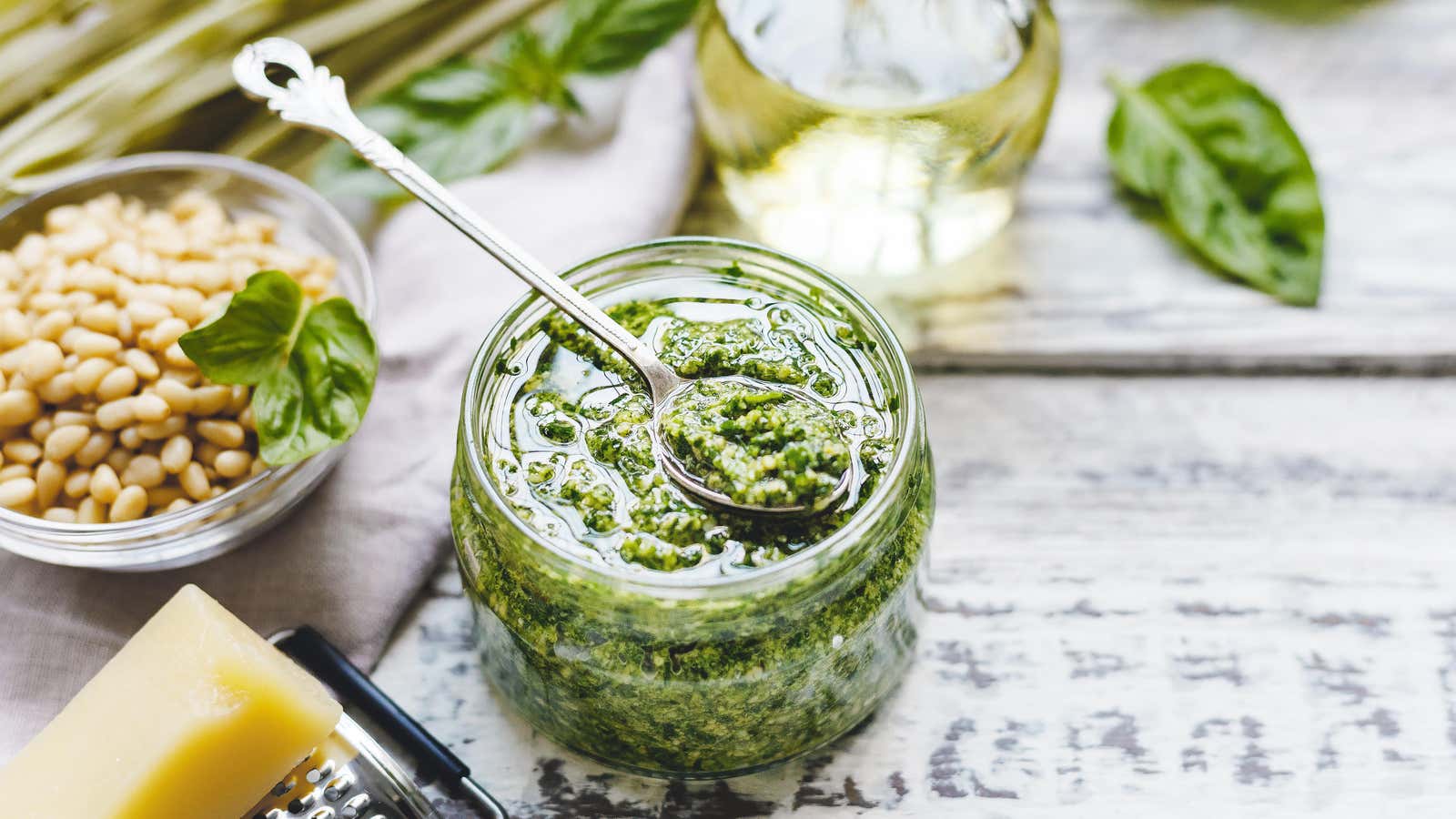How to Keep Leftover Pesto Fresh and Green

Pesto sauce made with pine nuts and Italian cheese is not cheap, mainly because of these pine nuts. Then it makes sense to want pesto to look as good as it tastes, even if it’s been in the fridge for a few days. But the problem is oxygen.
Oxygen has an unfortunate habit of oxidizing things – in this case, basil, which turns from bright green to a dull, hazy brown. Luckily, there are three ways to prevent this: two simple and lazy ones, and a slightly more complex, less lazy, but still not complicated way.
Season pesto with olive oil
The first easy way: you know what makes a great little oxygen-free barrier? Thick! Oil! It’s what you mix into your pesto that makes it juicy and spreadable in the first place. Once you’ve packed the pesto into a cute little jar, flatten the top and pour a layer of olive oil on top. The oil will prevent air from entering the pesto, allowing it to stay fresh and green for up to a week. Stir before serving.
Add some (more) lemon juice to the pesto
The second easy way: you’ve probably heard that vitamin C is an antioxidant, and now you can see it in action. According to Cook’s Illustrated , the addition of pure ascorbic and/or citric acid can give the pesto an off-putting sour taste, but lemon juice (which contains both acids) harmonizes with it. Aim for a ratio of 2 teaspoons of freshly squeezed juice to every cup of packaged basil.
blanch basil
A slightly more complicated way: oxygen cannot completely oxidize on its own. Enzymes in green leaves also play a role. According to Cook’s Illustrated , blanching “deactivates the browning enzyme when cut basil leaves are exposed to oxygen.” Simply immerse the leaves in boiling water for 30 seconds and then immerse them in ice water so they don’t “cook”. Dry thoroughly before adding to pesto.